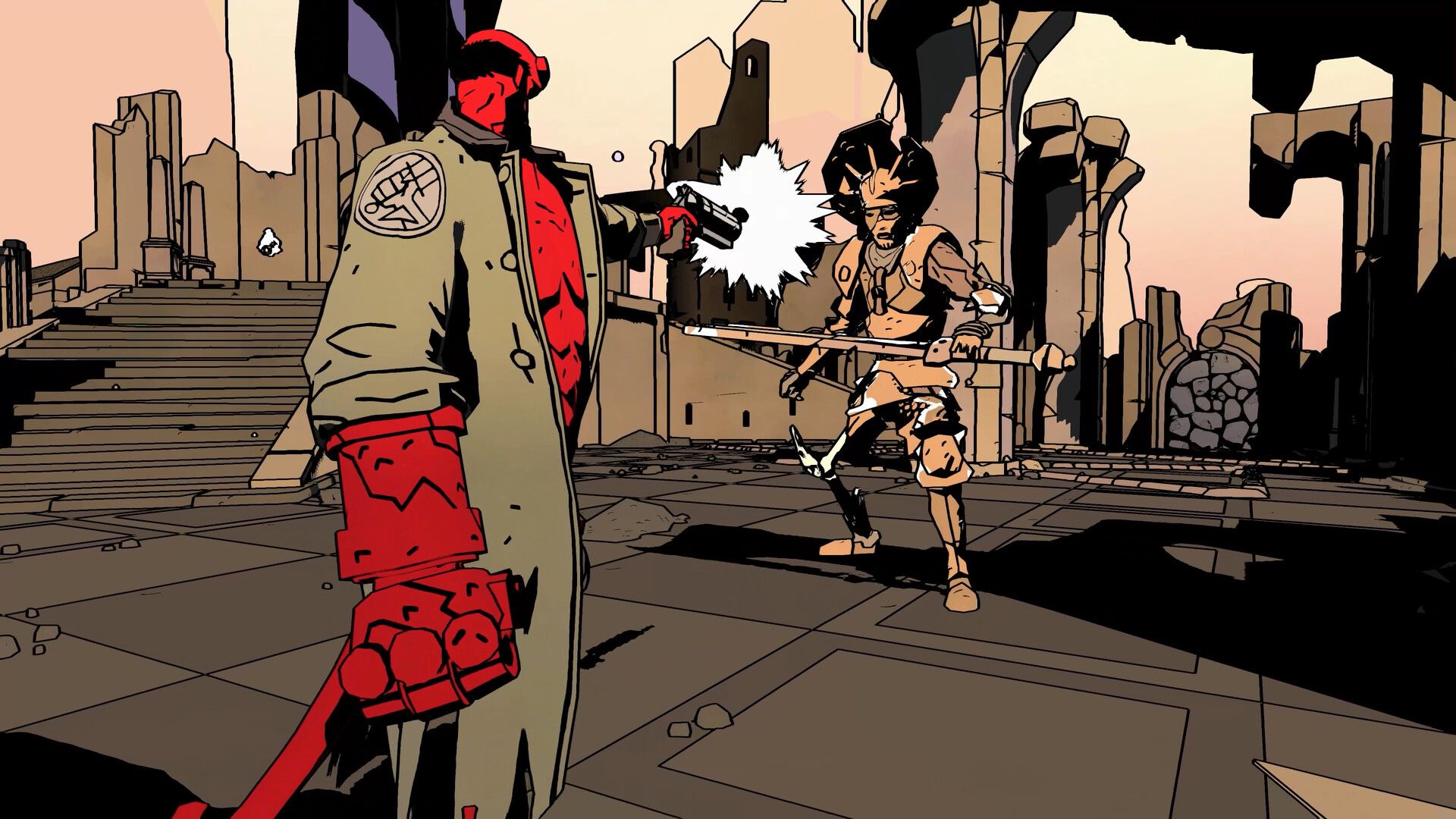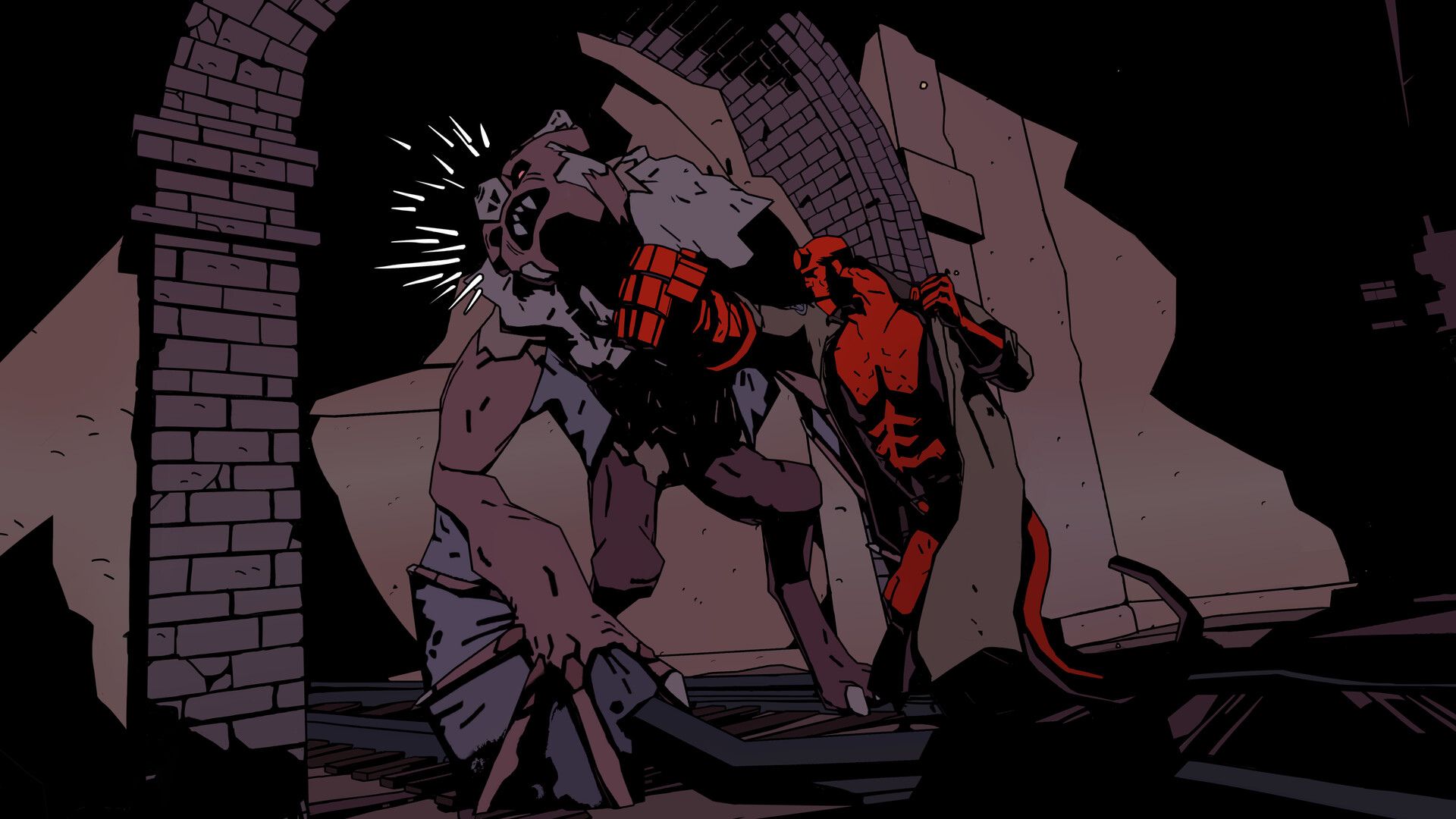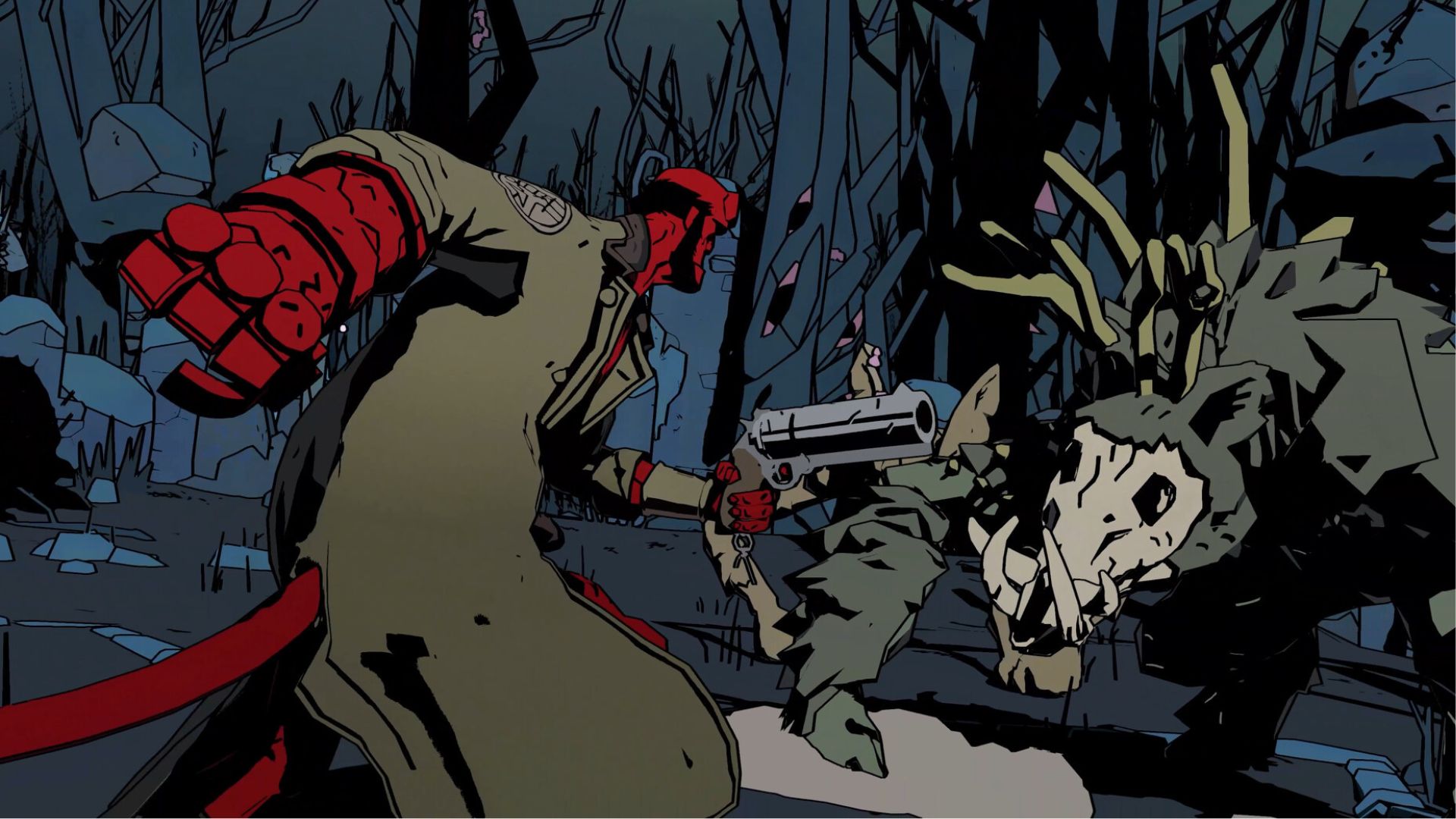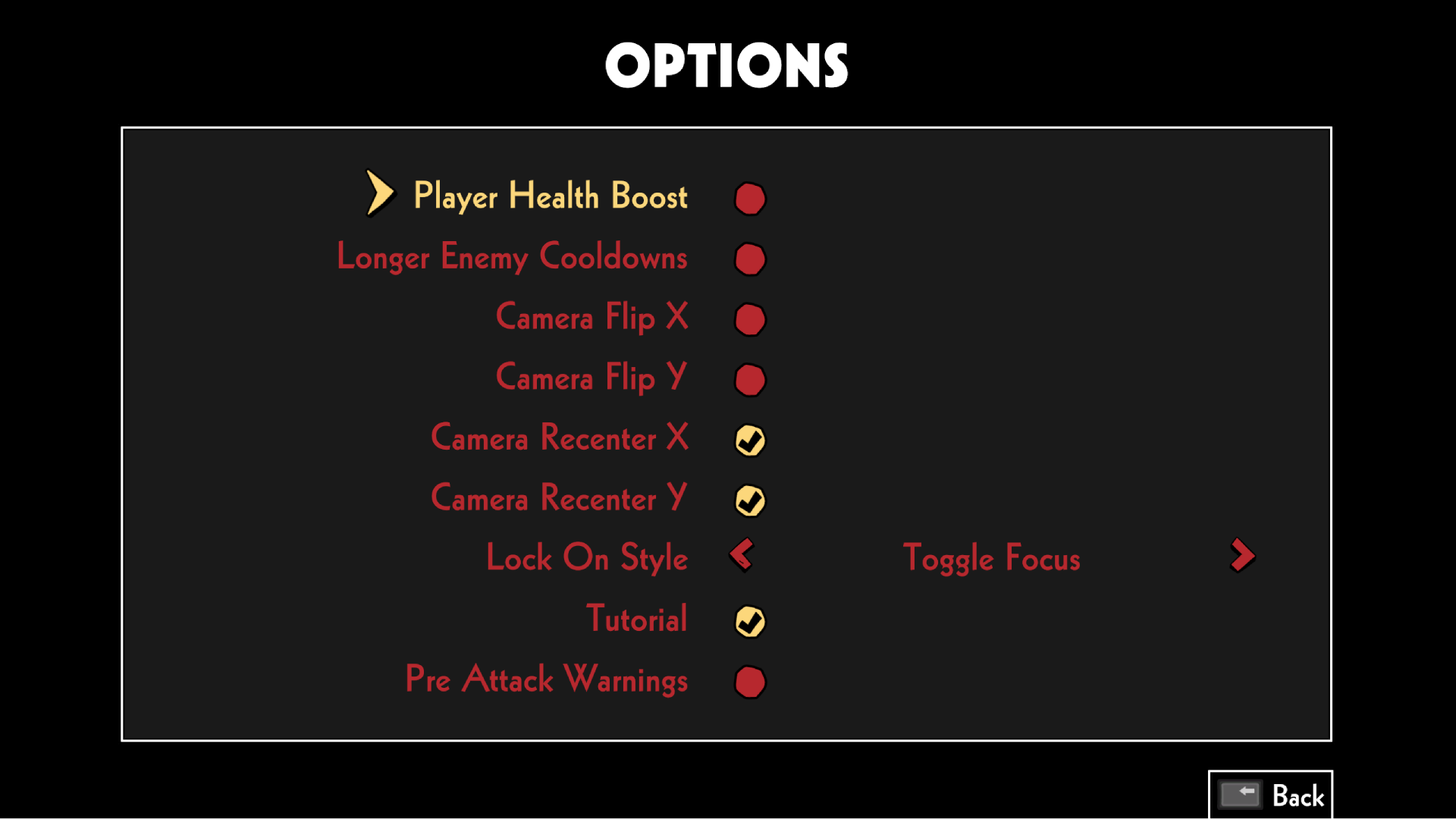TechRadar Verdict
This Hellboy roguelike nails the ‘Hellboy’ but fluffs the ‘roguelike’. A brilliant recreation of Mignola’s art and surprisingly sharp writing are let down by thin, repetitive gameplay.
Pros
- +
Beautiful art lifted straight from the comics
- +
Lance Reddick’s ever-weary Hellboy
- +
Plot is slight but satisfying
Cons
- -
Sluggish, simple combat
- -
Repetitive, repetitive, repetitive
Why you can trust TechRadar
Platform reviewed: PC
Available on: PS5, PS4, Xbox Series X|S, Xbox One, Nintendo Switch, PC
Release date: October 18, 2023
Hellboy Web of Wyrd is a fantastically faithful take on the iconic Dark Horse Comics character, right down to creator Mike Mignola’s distinctive aesthetic. It’s also, unfortunately, a slightly rubbish game.
Set in 1982, against the backdrop of the Falklands War - the chief giveaway that developer Upstream Arcade is made up of Brits - Web of Wyrd sees Hellboy exploring the Butterfly House, a mysterious manor that’s somehow tied to spikes in psychic energy around the world. From there, he has to dive into the Wyrd (pronounced ‘word’, not ‘weird’), a dimension shaped by the rules of narrative and ruled by the Norse Norns and One Thousand and One Nights’ Scheherazade, and figure out why it’s spilling over into the real world.
Upstream Arcade is best known for 2019’s twin-stick shooter West of Dead, which coincidentally featured the cranky tones of Hellboy actor Ron Perlman. Despite that connection, he didn’t return to voice Big Red in Web of Wyrd, with the late Lance Reddick instead delivering one of his final performances here.
It’s a relief to say that Reddick is excellent, and he wisely avoids any hint of a Perlman impression. His Hellboy is world-weary, more likely to complain than to quip, taking each of the plot’s twists and turns on the chin with the tone of a demon-cum-superhero who’s been there, done that, and beaten the Nazis up a few times already - all the more appropriate for the game’s roguelike rhythms.
Lost in the source

From the Butterfly House - a simple hub where you can chat with Hellboy’s fellow Bureau for Paranormal Research and Defense (B.P.R.D.) agents and upgrade your gear - you dive into one of four pockets of the Wyrd: medieval Italy, the Scottish woods, Russian ruins, and a collapsed Brooklyn subway tunnel.
The four worlds offer the game’s best expression of its source material, each rendered in simple set-dressing, distinct hues, and inky pools of black. This is likely the closest we’ll ever get to Mignola’s art rendered in pixels and is by far Web of Wyrd’s finest accomplishment.
No one draws this world quite like Mignola, but Web of Wyrd gets remarkably close, and like Hellboy’s creator the game uses its pitch-black negative space to good effect, chiefly to draw the eye where it should be: the next thing Hellboy has to punch. Each of the four locales is populated by a range of enemies both big and small. The little guys all go down with one hit, and in so doing restore a little of Hellboy’s ‘Toughness’ - a regenerative shield buffer that sits on top of his less-regenerative health bar.
Sign up for breaking news, reviews, opinion, top tech deals, and more.

Exploring the best recreation of Mignola’s distinctive aesthetic yet, with shadows so deep you worry Hellboy might get lost in them. You can’t deny that Web of Wyrd looks the part.
The Big Bads pop up one or two at a time and require more of a pummelling to take down. Unfortunately, Hellboy’s moveset is a little too comics-accurate, meaning there’s not a whole lot of variation to what he does. There’s a light punch, there’s a heavy punch, there’s a gun. Enemy attacks can be blocked or dodged, and you can also equip one of three Charms that can either repel enemies, create a one-hit shield, or deal a small hit of instant damage that penetrates an enemy’s Toughness and goes straight to their health bar.
Once you get the hang of the combat, it doesn’t change much from the game’s first fight through to its hundredth. This isn’t helped by an embarrassingly limited range of enemies - until you reach the game’s final stages you’ll only find two or three variants of Big Bad in each area, and not much difference between them. The overwhelming majority of them are simply big lads with bigger swords (or fists), and fights swiftly feel entirely interchangeable.
Incredibly barebones

In true roguelike fashion each trip into the Wyrd is procedurally generated, stitching together a slightly different layout of big spaces for fights and narrow passageways to get you to fights. Given that the scraps themselves are so similar, the main variation comes down to which buffs and currency drops the game throws your way each run. There aren’t many of those either though, and all too quickly I settled into a repetitive rhythm, knowing exactly which power-ups I’d pick from the small pool available, with no real incentive to ever mix it up. The game simply ran out of ways to surprise me, and did so within the first hour.
It doesn’t help that character progression outside each Wyrd run is pretty barebones too. You can add a little to Hellboy’s Health and Toughness or make his guns - a choice of pistol, shotgun, or grenade launcher - a little more punchy, but upgrades are hard-earned and infrequently impactful. The numbers go up, but the game never really changes. This might have been helped by a more gradual drip feed of the available weapons and charms, but players get the full set almost off the bat, and then there’s not much left to look forward to.
Where there are still surprises to be found is the story. Developed in conjunction with comics publisher Dark Horse, Web of Wyrd uses its roguelike structure smartly, sending you on loops through the four worlds that deepen each time, unpacking layers of the Wyrd and eventually revealing the game’s real villains - a surprisingly deep cut reference to the ‘Hellboy and the B.P.R.D.’ spin-off series.
Each world has its own sub-story, darting from deals with the devil to otherworldly fae, told through the bosses’ mid-fight barks and a smattering of lore entries dotted around to be read at your leisure in the Butterfly House.
The game doesn’t have a whole lot to say, but the story’s twists and turns are well thought through, and the writers have clearly had fun playing with the looping narrative - always just enough to seem self-aware, and never so much as to slip into wink-wink-nudge-nudge territory.
Hellboy fans - and I count myself all too deep among them - will doubtless enjoy exploring Mignola’s art made interactive, and the one-two of Lance Reddick and a sharp script keep Web of Wyrd trundling along. But there’s just not enough game to fill the gaps in the story, none of the mechanical depth to reward diving back into the same old Wyrd again and again and again.
Just like the comics that inspired it, Web of Wyrd is sadly paper-thin.
Accessibility features

There are no dedicated accessibility features, though options to tweak enemy cooldowns and add attack warnings could help anyone struggling with the timing of combat. Controls are remappable too, but there are no colorblind filters or options to adjust text size or readability.
How we reviewed
I played 17 hours of Web of Wyrd, not quite finishing off the storyline but progressing through several of the roguelike narrative loops and unlocking the majority of the game’s lore entries.
Our list of the best superhero games might be of interest for a more engaging adventure.
